Alaska Economic Trends
Alaska Economic Trends is a monthly magazine that covers a range of economic topics.
Sign up for a free electronic subscription. 
Sign up for a paid print subscription.
Alaska Economic Trends are searchable from 1961 to the present using the Trends search page. The search can include any combination of the following: Key Words, Date Range, Author, Category
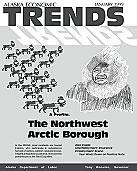
Hugging Kotzebue Sound and belted by the Arctic Circle, the Northwest Arctic Borough is Alaska's second largest borough. Only the North Slope Borough is larger. Although the Northwest Arctic Borough was not formed until 1986 and its 11 communities are spread out over nearly 36,000 square miles, it is one of the most economically and culturally unified political subdivisions in the state.
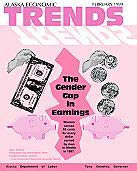
Women in Alaska earn less than men, on average. In 1997 Alaska females had wage and salary earnings only 65 percent as much as Alaska males, earning $19,070 versus average male earnings of $29,339. Females make up 47 percent of total workers.
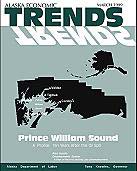
Since the oil spill of 1989, the economies of Prince William Sound have undergone a variety of changes some dramatic and others more subtle. Only a few broad generalizations can be made about the economy of the Sound itself. That is because the region represents not a single economy but five distinct communities that usually operate independently of each other. March 1999 Trends
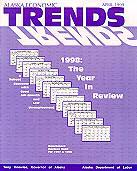
Alaska's job base grew 2.5% in 1998, with growth accelerating for the second consecutive year. Statewide, 6,700 jobs were added, the largest numerical increase since 1990.

Alaska's economy will continue to grow through 2000, although forecast employment growth rates in 1999 and 2000 will be among the slowest in Alaska during the last 10 years. A contracting oil and gas industry and the associated impacts in other sectors of the economy will put the brakes on the state's job growth.
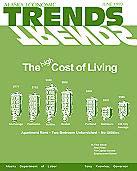
'How expensive is it to live in Alaska? What is the rate of inflation in Alaska? These are two of the questions most frequently asked of the Alaska Department of Labor's Research and Analysis section. In answer to these questions
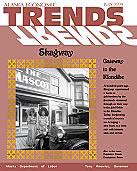
During the Klondike gold rush of the late 1890s, thousands headed north to Alaska and the Yukon Territory in search of personal fortune. Goldseekers came through Skagway, the port nearest to embarkation points for the famous Chilkoot and White Pass trails, on their way to Dawson City and points beyond. The first boatloads of stampeders arrived in Skagway and nearby Dyea in the summer of 1897. By October, a Northwest Mounted Police report estimated Skagway's population at more than 20,000.

For the eighth year in a row, Carr Gottstein Foods claimed the top spot on the list of largest Alaska employers for 1998. This will be Carrs' last year at the top because its recent buyout by Safeway will mean all operations will move under the Safeway corporate umbrella. This practically insures that Safeway Stores, ranked 10th in 1998, will move to number one in 1999.
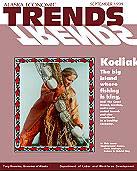
Alaska's biggest island, and the second largest in the nation, is Kodiak Island. With its surrounding islands, it is home of the Kodiak Island Borough, which encompasses 6,463 square miles of land, an area larger than the state of Connecticut. The Borough has 1,274 miles of coast, and many fjords, peninsulas and capes.
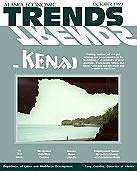
The Kenai Peninsula Borough's economy is one of amazing diversity. Unlike many places in Alaska, where one or two industries dominate the economy, the Peninsula's economy requires considerably more effort to describe. In a nutshell, the economic strength of the borough is its diversity.
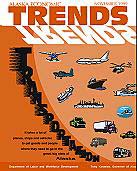
Nearly 22,000 people work in Alaska's transportation industry, making it one of the state's larger employers. Employment in transportation is greater than in the state's timber, oil, and construction industries. In fact, it employs about the same number of people as state government.

As Alaska approaches the year 2000, the staff of Alaska Economic Trends thought it would be an opportune moment to look back at major economic trends that have helped shape Alaska since statehood. Alaska has moved from the formative days of statehood through oil and gas's rise to dominance in the economy and on to life after Prudhoe Bay.
